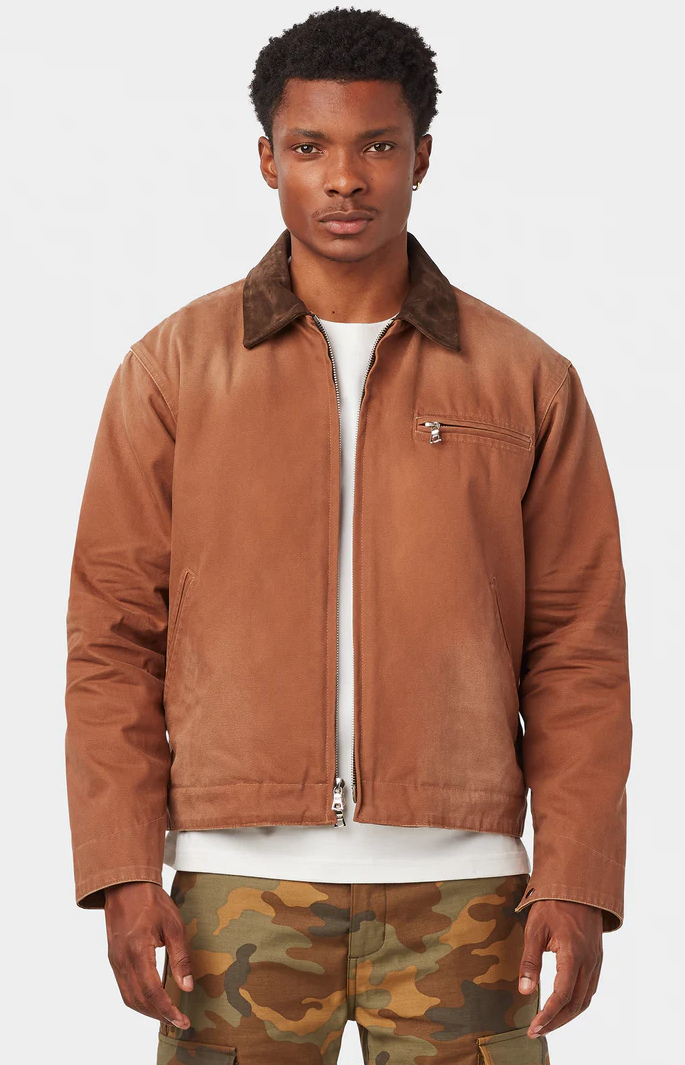magreen
Member
- Joined
- Dec 21, 2013
- Messages
- 14
- Reaction score
- 0
I just made my own empirical observations using the pinch test with three of my suits: a Brooks Brothers fully canvassed suit, a Brooks Brothers 1818 suit (made in USA of imported fabric, bought in 2014 at a retail store in the USA), and the JAB Sig Gold suit I complained about in the OP. I am no tailor, and I did not rip open the 1818 at the bottom to look inside. But what I felt was interesting.
To get a feel for things, I first did the pinch test on the fully canvassed BB suit, testing first the sleeves to get a feel for the fabric, and then pinched the front. As expected, on the front the fabric came away from the canvassing and felt like the same thickness and heft as the sleeve. This was true at the bottom of the front and up higher in the chest. I could also feel the canvassing between the layers.
Interestingly, on the 1818 suit I did not feel any fusible in the lower half. I first pinched the sleeve, separating the fabric from the lining. Then when I pinched the front of the suit near the bottom, I felt neither canvas nor fusible: the fabric had the same thickness, heft, and feel as the fabric on the sleeve when pulled apart from the fabric/lining on the inside. And as expected, there was no canvassing down there. Moving up the suit, I could clearly feel the line where the canvassing begins. When you squeeze it and run your fingers up and down, there is a sudden step there where the suit's overall thickness becomes greater. And I could feel the canvassing in between the layers. But to my hand, there was no difference in the feel of the outer layer of material whether at the bottom or top of the front, or at the sleeve. I know there's disagreement above over whether the floating half-canvassed suit with no fusible exists. But if there is such a thing, this sure feels like it to me.
For confirmation, I did the same on the JAB suit. The fabric in front near the bottom felt entirely different from the fabric on the sleeves when I pinched them both. The fabric on the sleeves was thin and supple and felt quite light. The fabric on the front near the bottom felt thick and heavy--as expected when it's laminated to fusible. Up higher, running my hand up and down near where the canvassing begins I felt no clear line or significant difference in overall thickness of the suit. But I could feel the canvas in the middle in the upper part.
So that's my $0.02. Not an expert. But I suspect what was written above regarding 1818 suits--i.e., floating half-canvassed and no fusible--is true for mine.
![peepwall[1].gif](http://files.styleforum.net/images/smilies/peepwall[1].gif)
To get a feel for things, I first did the pinch test on the fully canvassed BB suit, testing first the sleeves to get a feel for the fabric, and then pinched the front. As expected, on the front the fabric came away from the canvassing and felt like the same thickness and heft as the sleeve. This was true at the bottom of the front and up higher in the chest. I could also feel the canvassing between the layers.
Interestingly, on the 1818 suit I did not feel any fusible in the lower half. I first pinched the sleeve, separating the fabric from the lining. Then when I pinched the front of the suit near the bottom, I felt neither canvas nor fusible: the fabric had the same thickness, heft, and feel as the fabric on the sleeve when pulled apart from the fabric/lining on the inside. And as expected, there was no canvassing down there. Moving up the suit, I could clearly feel the line where the canvassing begins. When you squeeze it and run your fingers up and down, there is a sudden step there where the suit's overall thickness becomes greater. And I could feel the canvassing in between the layers. But to my hand, there was no difference in the feel of the outer layer of material whether at the bottom or top of the front, or at the sleeve. I know there's disagreement above over whether the floating half-canvassed suit with no fusible exists. But if there is such a thing, this sure feels like it to me.
For confirmation, I did the same on the JAB suit. The fabric in front near the bottom felt entirely different from the fabric on the sleeves when I pinched them both. The fabric on the sleeves was thin and supple and felt quite light. The fabric on the front near the bottom felt thick and heavy--as expected when it's laminated to fusible. Up higher, running my hand up and down near where the canvassing begins I felt no clear line or significant difference in overall thickness of the suit. But I could feel the canvas in the middle in the upper part.
So that's my $0.02. Not an expert. But I suspect what was written above regarding 1818 suits--i.e., floating half-canvassed and no fusible--is true for mine.
![peepwall[1].gif](http://files.styleforum.net/images/smilies/peepwall[1].gif)
Last edited:


